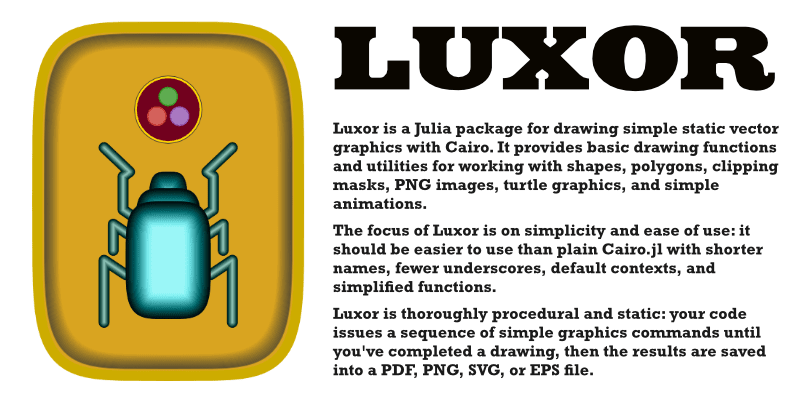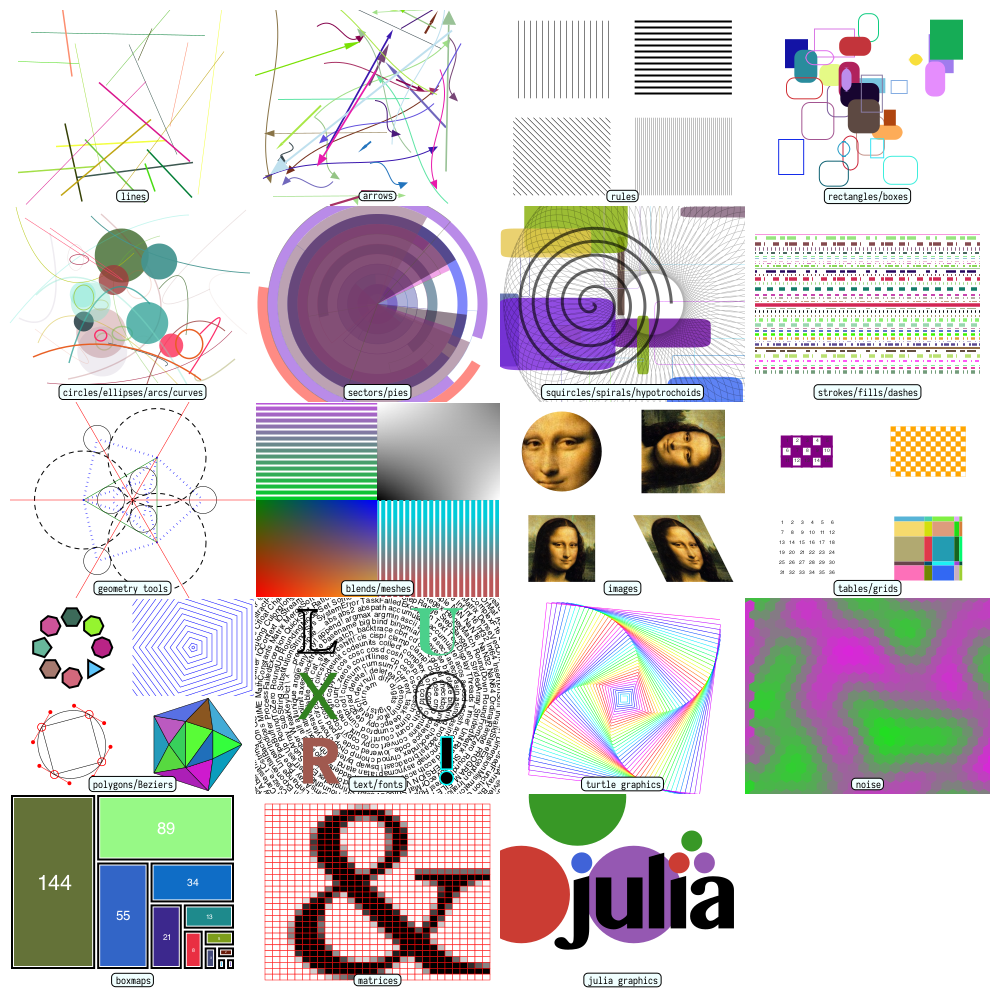| Documentation | Build Status | Code Coverage |
|---|---|---|
 |
||
 |
Luxor is a Julia package for drawing simple 2D vector graphics. Think of it as a high-level easier to use interface to Cairo.jl, with shorter names, fewer underscores, default contexts, and simplified functions. In Luxor, the emphasis is on simplicity and ease of use.
Luxor is thoroughly procedural and static: your code issues a sequence of simple graphics 'commands' until you've completed a drawing, then the results are saved into a PDF, PNG, SVG, or EPS file.
A short tutorial can be found in the documentation. There are some Luxor-related videos on YouTube, and some Luxor-related blog posts at cormullion.github.io/.
Luxor is designed primarily for drawing static pictures. If you want to build animations, use Javis.jl.
Luxor isn't interactive: for building interactivity, look at Pluto.jl and Makie, and Pluto.jl.
If you know any geometry you probably know more than me, so there are plenty of improvements to algorithms waiting to be made. There are some TODO comments sprinkled through the code, but plenty more opportunities for improvement.
Update the code, most of which was written for Julia versions 0.2, v0.3 and 0.4 (remember when broadcasting wasn't a thing?) so there are probably many areas where the code could take more advantage of version 1.
There can always be more tests, as the present tests are mainly visual, showing that something works, but there should be much more testing of things that shouldn't work - inappropriate input, overlapping polygons, coincident or collinear points, anticlockwise polygons, etc.
More systematic error-handling particularly of geometry errors would be a good idea, rather than sprinkling throw(error())s around when things look wrong.

